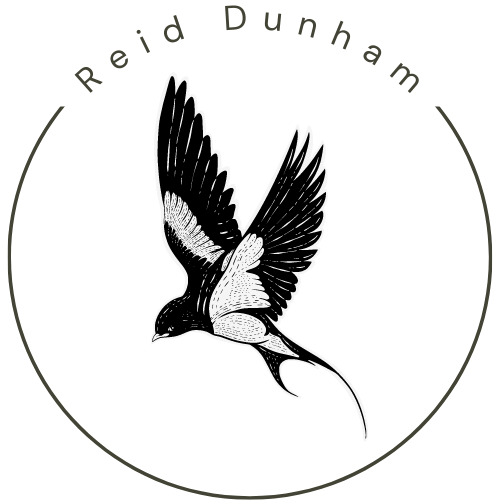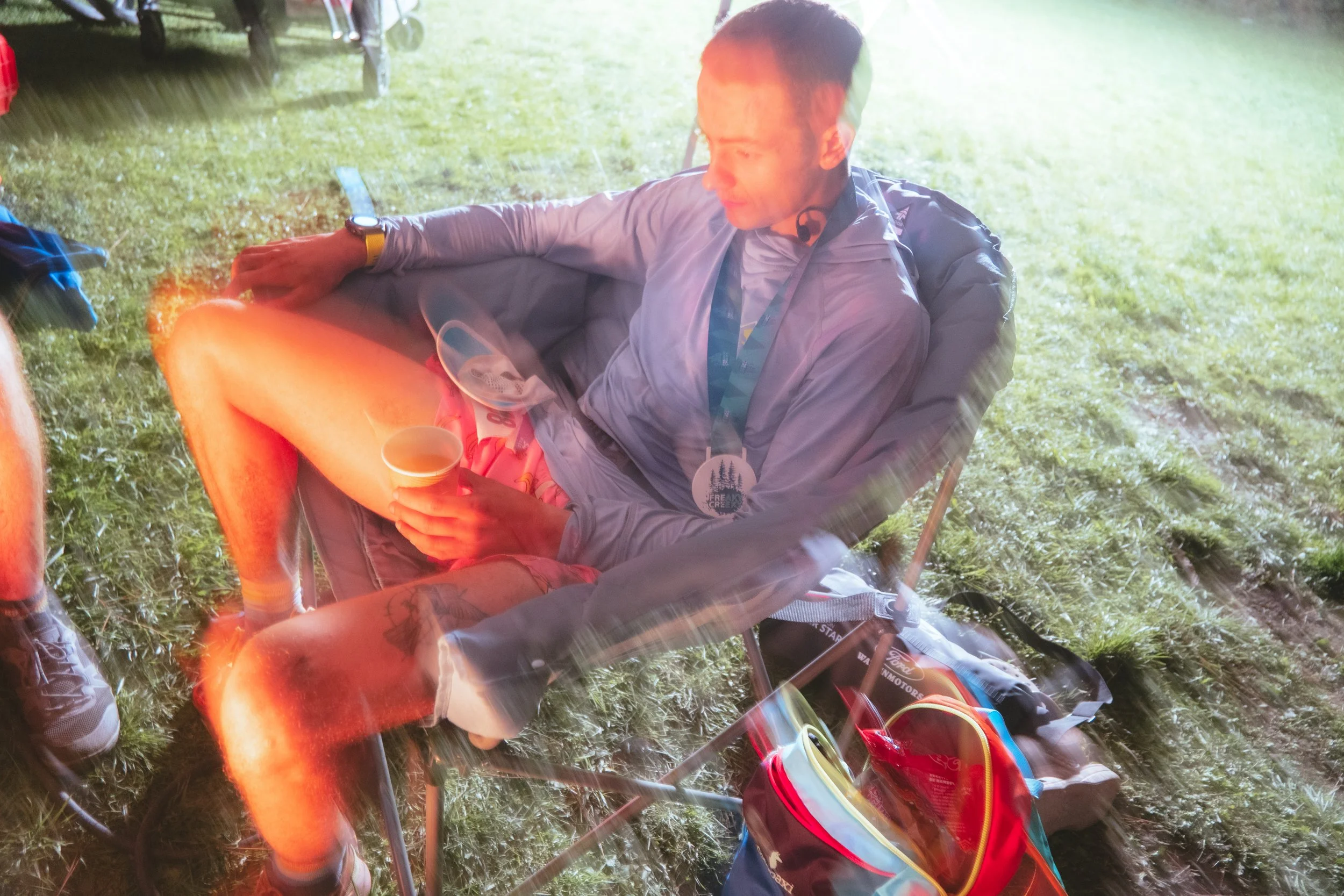Once the Ink is Dry
How many times in your life have you caught yourself saying, “I have to…”—whether it’s going to work, grocery shopping, meal prepping, exercising, getting your oil changed, or some other task you’d rather avoid? In today’s fast-paced world, we’re constantly weighed down by endless to-dos, often muttering “Ugh, I have to do this” as we reluctantly push through.
Since graduating from student life into full-time nursing and adulthood, I’ve noticed these moments never stop. They’re there all day, every day—and they will keep coming. Working as an emergency room RN for over a year has given me a profound shift in perspective. In the ER, I see how quickly life can change. One moment, someone is worrying about ordinary things like errands or chores. The next, their world is flipped upside down.
The truth is, we’re all racing against death. No matter how many supplements we take or diets we follow, one day that eternal pit of nothing wins. At first, that realization left me in a dark place—if it can all end tomorrow, what’s the point? Like many twenty-something guys searching for meaning, I turned to David Goggins’ books and signed up for not just a marathon, but a 54-mile ultramarathon through the Vernon mountains. While my thoughts on what I call the “who’s gonna carry the boats” mindset have evolved (something I’ll write about later about David Goggins), one philosophy of his struck a chord with me: imagine that when you die, you meet a higher power—God, the universe, whatever you believe in—and they show you everything you could have been. You either face regret for not living up to your potential or pride in what you accomplished. Because once you’re gone, the ink is dry, and your story is done. Seeing lives cut short or altered forever in the ER made that idea hit hard. Some people will never get the chance to finish their story. That’s when I decided to shift my own mindset: from “I have to live this life” to “I get to live this life.”
Life has always been, since the dawn of time, a continuous checklist of things that need to get done. As much as I’d love to imagine a utopia where those tasks disappear, the list rolls on—whether we like it or not. Humans, though, are creatures of routine. We find ways to group our responsibilities into blocks at predictable times, making them feel more manageable.
For example, during nursing school my Saturdays followed the exact same rhythm: wake up, eat breakfast, drink coffee, study until noon, eat lunch, go for a jog, study again from 1:30 to 3:00, take a nap, head to the climbing gym, grocery shop, do laundry, eat dinner, spend time on hobbies, and go to bed. That was just one of my routines for four years of school but it made the overwhelming nature of university become manageable. And while routines like this are necessary for functioning in society, they can also become robotic. Soon, life turns into a cycle of going to the grocery shop on Saturdays, doing laundry on Sundays, date night on Fridays—because that’s what we always do. Then suddenly, you catch yourself saying, “Wow, it’s already spring. Didn’t Christmas just happen?” because you are constantly worrying about the next thing that needs to get done.
I’m not here to bash routines—they’re essential, and I rely on them too. But from my own experience, going through the motions too rigidly can leave you drained, bitter, and resentful. That’s where the “I have to” mindset creeps in. We get so entrenched in habit that we start to feel trapped by it, resenting the very tasks that structure our lives. So the question becomes: if routines are unavoidable, but can also consume us and wear us down, what’s the solution? Maybe there isn’t a perfect answer—maybe the paradox of life is that we’re meant to keep searching for one. But I do believe the starting point is simple: cultivating an attitude of gratitude.
Humans like to believe we have agency over our lives—it gives us a sense of safety and the comfort of free will. However, working in the ER over the last couple of years has shown me that some things, often the biggest ones, are completely out of our control. I’ll always remember one of the first major traumas I witnessed: a patient driving home was hit head-on by a drunk driver who swerved into oncoming traffic. As a student, I didn’t fully understand everything happening as the ER team worked to save them, but I knew this person would either die from their injuries or never fully recover. They had done nothing wrong—they were simply in the wrong place at the wrong time.
Tragically, situations like this happen often, and because it’s my job, I try not to dwell on them. But watching lives change in an instant has shifted the way I see my own. When you understand that your story could end at any moment, it fosters a deep sense of gratitude for the life you do have. An attitude of gratitude is about consciously appreciating both the big and small moments of each day. And for me, that perspective has become the difference between simply existing and truly living.
Still, knowing this and actually living it are two very different things. Gratitude can be easy to forget when you slip into the grind of daily life, and I often found myself wrestling with the gap between who I was and who I wanted to be. The feeling of not being your best self is enough to drag anyone into a pit of despair. Add social media into the mix, and it’s like throwing rocket fuel on an uncontrollable fire. After reading David Goggins’ book and imagining what a higher power might one day show me about everything I could have done with my life, I did what any logical person would do: I signed up for a 54 mile ultramarathon (roughly 90 kms). It felt like the only solution to the rut I was in. Maybe some part of me believed that training for this race would give me purpose—that crossing that finish line would finally start checking off my imaginary list of who I wanted to become.
At first, it worked. The first week of training felt amazing. I felt fit, motivated, unstoppable. The mistake I made, though, was forgetting one of Goggins’ biggest lessons: motivation means nothing. You don’t rise to the level of your expectations—you fall to the level of your preparation. And I had none. Up to that point, the farthest I had ever run was 12 km. By week two, when I realized I had to repeat the same grind, the excitement drained. Suddenly, I was saying things like, “I have to run today” or “I’ll just do it tomorrow”—even though I had chosen this race myself.
I told myself I was fine. After all, I’d been an athlete growing up. I pictured myself as this badass trail runner and trauma nurse—tough, smart, the kind of person who would “carry the boats.” (another David Goggins saying I will talk about later). Sometimes I even convinced myself I already was that person. But in reality, I wasn’t living it. I was training only when I felt like it, treating the days I forced myself to go as a chore, and going through the motions at work. I stopped being curious. I stopped growing. However hindsight is 2020, and I can see that now. But at the time, though, skipping a training day felt like “self-love,” and running a 5 km after work had me convinced I was Goggins himself.
Then race day came. At first, it was perfect—smooth, steady, everything clicking. By 25 km, I was already visualizing the finish line, certain I was exactly the man I had imagined. But the next 30 km crushed me. By the halfway point, I stumbled into the aid station, knees screaming, dazed, exhausted, and muttered to my girlfriend: “This is a terrible sport.” Quitting never crossed my stubborn mind, but the image I had built of myself shattered. I wasn’t a badass. I wasn’t even prepared. I was just an undertrained fool who got swindled by a self-help book into running a race I had no business being in.
Still, I pushed on. I ate some sushi, drank Gatorade, and told myself: Just get to the next aid station. When that didn’t work, it became: Once this climb is done, it’ll get easier. (Spoiler: downhills make bad knees worse.) By sunset, with 25 km still to go, I was limp-running in the dark, counting my steps—1, 2, 3, 4—my headlamp casting my only trail companion, my shadow.
And that’s when something shifted. Stripped of all the illusions of toughness, I realized I didn’t know who I was or why I was even doing this. Was it to prove something on Instagram? To live up to some image I’d made of myself? But in that brokenness, I started to feel something unexpected: gratitude. Gratitude for the fact that my body could still move, even in pain. Gratitude for my health. Gratitude for my family. Gratitude for my partner waiting at the finish as she patiently waited as I rolled in 2-3 hours past when I told her I would be done. Gratitude for the moon above me—even if, for a moment, I thought it was the course photographer’s balloon.
In that moment, I understood something I’d already seen countless times in the ER but hadn’t let sink in: people’s lives can be destroyed in an instant. You can lose the chance to do the simple things—run, grocery shop, fold laundry—at any time. And because of that, you owe it to yourself, and to those who no longer can, to do these things with gratitude.
I dragged myself slowly to the finish line still in pain, but it was gratitude that carried me there. When my girlfriend asked me how it was as I sat in front of a propane fire with my finisher’s medal, all I could say was: “That was hard.”
No one can escape the mundane parts of everyday life. Whether you’re feeling resentful of your current routine or fully embracing everything life has to offer, remember this: those feelings will shift, for better or for worse. The real challenge lies in how you respond. Will you fall into the “I have to do this” mindset, or will you choose to cultivate an attitude of gratitude?
You don’t have to be perfect—I certainly am not. I still have days where I just go through the motions. But I’ve learned that gratitude, even in small doses, makes the weight of routine more bearable. This isn’t advice, just the perspective I’ve found as I continue to grow into adulthood.
The one truth for all of us is that death is certain. So the only question left to ask yourself is this: how will your story play out once the ink is dry?




